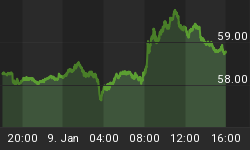Timing attempts to provide market equivalent returns over the long term, with a substantial reduction in variability of returns. The two components of the Timing program are EZ+Macro and Fear/Greed. This system trades rarely and splits its allocations between ETFs tracking the S&P 500, the intermediate-term U.S. Treasuries, and cash.
Information is as of the close on November 26, 2007.
EZ+Macro
EZ Trend is up for the U.S. stock market as approximated by the S&P 500. While the U.S. Ten-Year Treasury price is also bullish by EZ Trend, my latest backtesting hasn't indicated that a position in bonds is warranted in this EZ+Macro configuration.
It would take more sustained action than we have yet seen this year, for this portion of the system to move, either partially or fully, to Treasuries.
Fear/Greed
The Fear/Greed model signaled a buy for the U.S. stock market in early November. It would signal a sell only if $VIX relative to actual volatility fell to a historically low level. This is a tough model to follow, as it demands a buy and hold when fear is high and most people would like to sell.
Panic days are not "sell" signals to this portion of the model. Only increased complacency, relative to the actual index volatility, would move this portion of the system to cash.
Model Allocation
S&P 500 SPDRs (SPY) - 100%
iShares 7-10 Year Treasury Bond Fund (IEF) - 0%
Cash - 0%
Tracking
There are no changes to the allocation from last week's message.
Commentary
The S&P 500 index is back near the lows of mid-August, as are the Russell 2000, the Nasdaq Composite, and the Dow 30. Interestingly, the tech-heavy Nasdaq 100 and small-cap-heavy NYSE Composite are still above their mid-August lows. So are the strongest industries and several of the emerging and Asian market country-specific ETFs. This is what some technicians refer to as a positive divergence, since not all sectors or indices are confirming the weakness in the S&P 500.
Today's action smacked of fear and panic. Of the ninety ETFs I track for Rotational, only seventeen avoided losses today, and eleven of those were either bond or currency ETFs; five experienced price gains over +1% today, and four of those were BOND ETFs. Today was a "flight to safety."
Systems can sometimes be psychologically uncomfortable to follow. Systems can sometimes be wrong. Regardless, I personally believe that it would make little sense to invest in devising a system to follow, only to countermand its signals with emotional responses and second-guessing.















